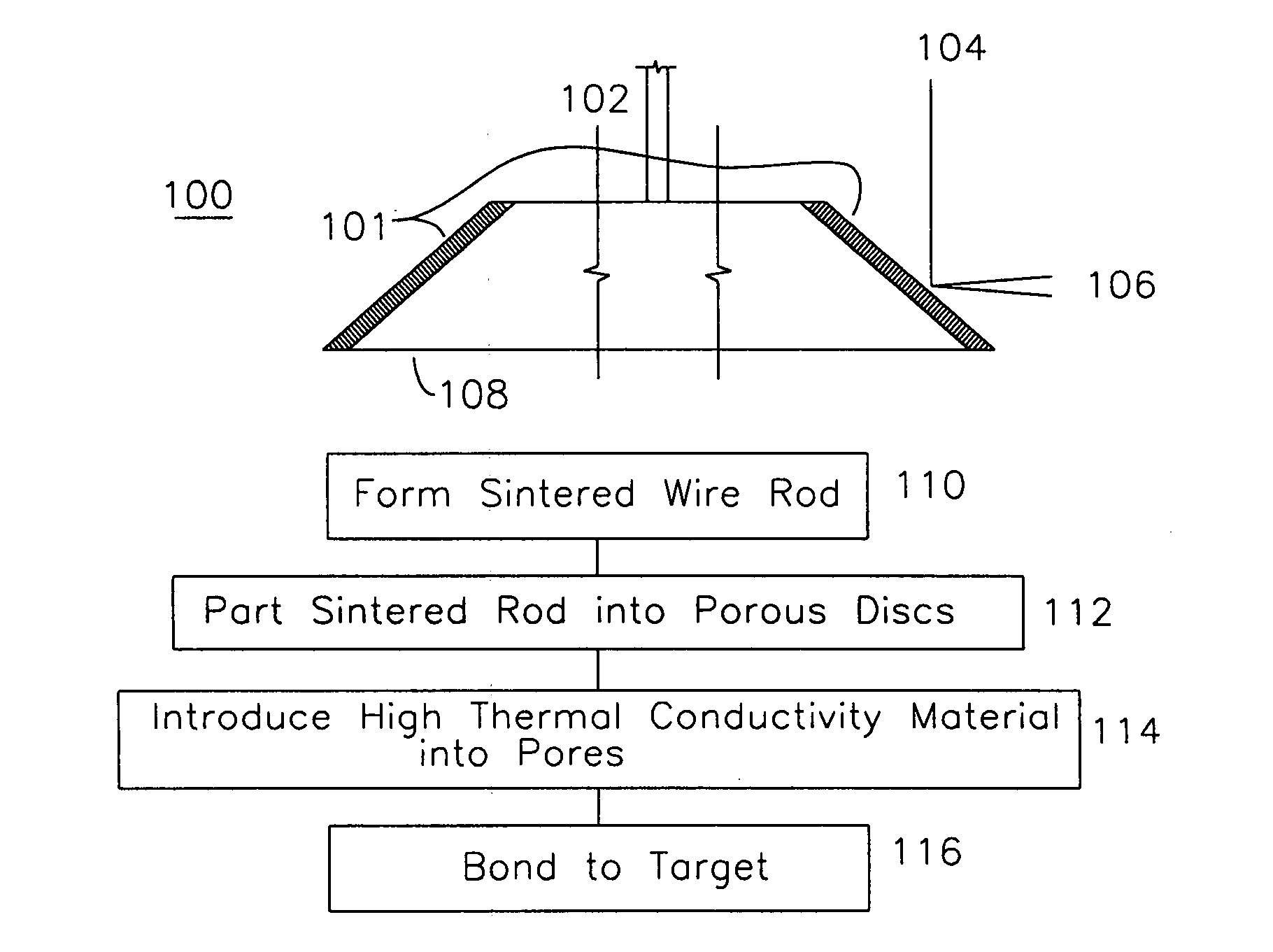Sintered wire anode
a technology of sintered wire and anode, which is applied in the direction of x-ray tube target materials, x-ray tube targets, convertors, etc., can solve the problems of material buckle or warp, material size and distribution of pores can be optimized, and improve the operating characteristics, including cathode emission density and lifetime.
- Summary
- Abstract
- Description
- Claims
- Application Information
AI Technical Summary
Benefits of technology
Problems solved by technology
Method used
Image
Examples
Embodiment Construction
[0055]FIG. 3a shows a round bobbin 31 having tungsten wire 30 wound around it, or alternatively a square bobbin 33 having been wound with tungsten wire 30. The wire 30 may be formed from any material or diameter, however it is believed that tungsten wire with a fixed diameter in the range 10-20u is preferred for porous dispenser cathodes. Tungsten wire in this diameter range is commonly available for use in electro-discharge machining (EDM) and is also used as a source material for fabricating the filament of an incandescent light bulb. When wound about a square 34 or circular 31 bobbin, the cross section a-a of a bundle of such tungsten wires appears as shown in FIG. 3b. While the axial wire 30 tension from winding on the bobbin naturally causes a radial confining force, it may be desired to supplement this tensile force with external confining force 38 to enable uniform wire 30 packing during sintering. The porous cathode structure is formed from a plurality of sintered tungsten w...
PUM
| Property | Measurement | Unit |
|---|---|---|
| temperature | aaaaa | aaaaa |
| thickness | aaaaa | aaaaa |
| temperatures | aaaaa | aaaaa |
Abstract
Description
Claims
Application Information
 Login to View More
Login to View More - R&D
- Intellectual Property
- Life Sciences
- Materials
- Tech Scout
- Unparalleled Data Quality
- Higher Quality Content
- 60% Fewer Hallucinations
Browse by: Latest US Patents, China's latest patents, Technical Efficacy Thesaurus, Application Domain, Technology Topic, Popular Technical Reports.
© 2025 PatSnap. All rights reserved.Legal|Privacy policy|Modern Slavery Act Transparency Statement|Sitemap|About US| Contact US: help@patsnap.com



